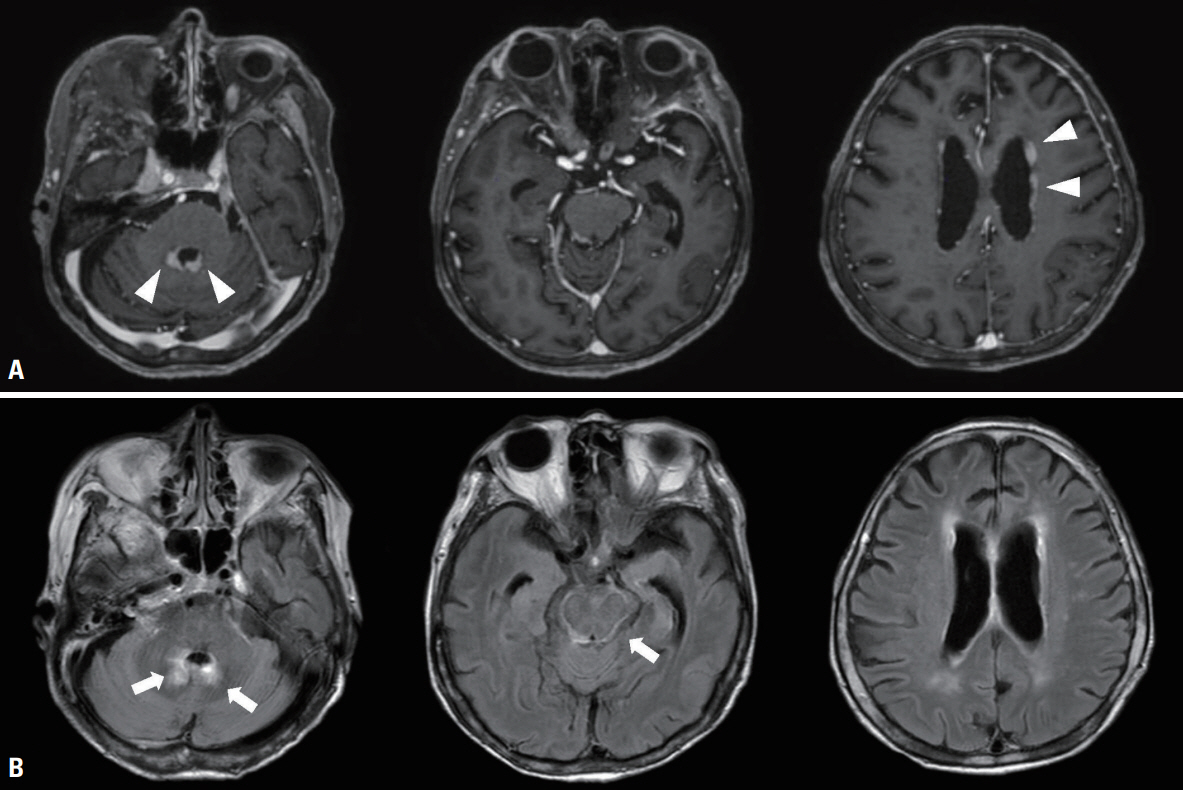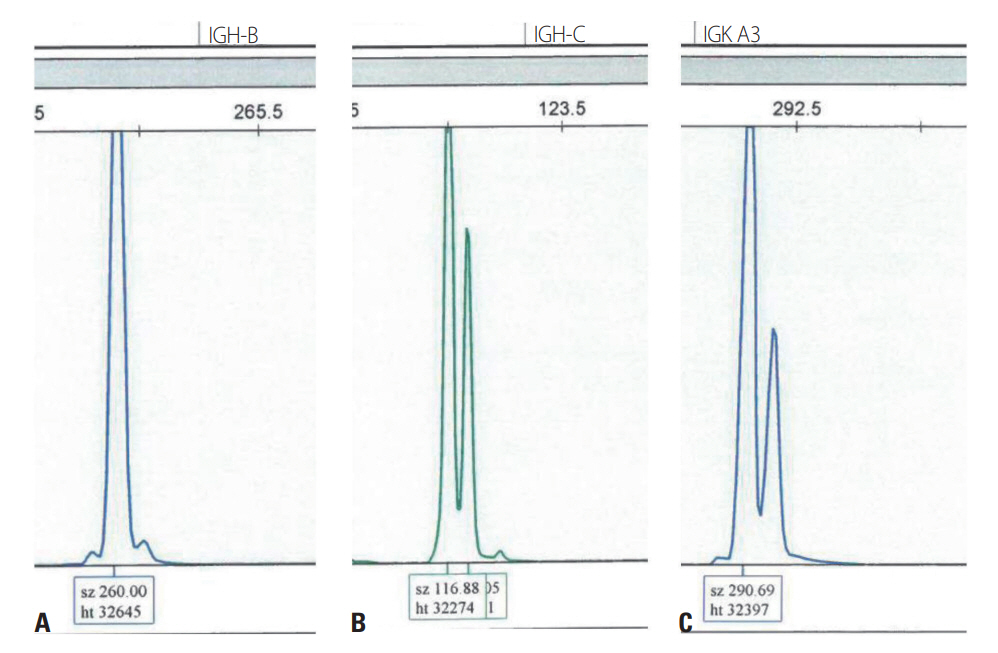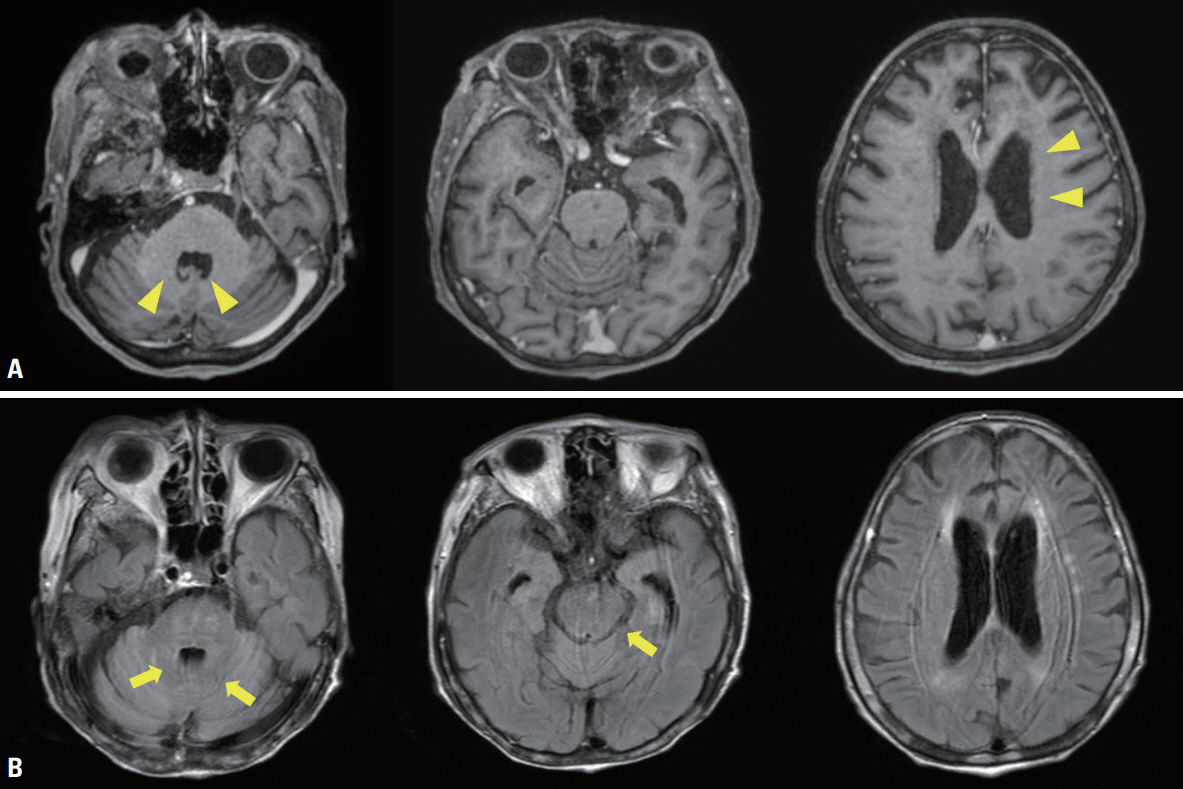Ann Clin Neurophysiol.
2022;24(2):63-67. 10.14253/acn.2022.24.2.63.
A case of primary central nervous system lymphoma diagnosed with cerebrospinal fluid analysis: replacement brain biopsy with cerebrospinal fluid immunohistochemistry and immunoglobulin gene rearrangement
- Affiliations
-
- 1Department of Neurology, Haeundae Paik Hospital, Inje University of College of Medicine, Busan, Korea
- 2Department of Laboratory Medicine, Haeundae Paik Hospital, Inje University of College of Medicine, Busan, Korea
- 3Department of Laboratory Medicine, Busan Paik Hospital, Inje University of College of Medicine, Busan, Korea
- 4Department of Pathology, Haeundae Paik Hospital, Inje University of College of Medicine, Busan, Korea
- KMID: 2535720
- DOI: http://doi.org/10.14253/acn.2022.24.2.63
Abstract
- Primary central nervous system lymphoma (PCNSL) is a type of non-Hodgkin lymphoma confined to the central nervous system. Its diagnosis requires a stereotactic biopsy, which is an invasive procedure. Cerebrospinal fluid (CSF) analysis is less invasive and easier to perform than a stereotactic biopsy. We hereby report a PCNSL case diagnosed using CSF analysis and treated with systemic chemotherapy.
Figure
Reference
-
1. Grommes C, DeAngelis LM. Primary CNS lymphoma. J Clin Oncol. 2017; 35:2410–2418.2. Kleinschmidt-DeMasters BK, Damek DM, Lillehei KO, Dogan A, Giannini C. Epstein Barr virus-associated primary CNS lymphomas in elderly patients on immunosuppressive medications. J Neuropathol Exp Neurol. 2008; 67:1103–1111.3. Scott BJ, Douglas VC, Tihan T, Rubenstein JL, Josephson SA. A systematic approach to the diagnosis of suspected central nervous system lymphoma. JAMA Neurol. 2013; 70:311–319.4. Weller M. Glucocorticoid treatment of primary CNS lymphoma. J Neurooncol. 1999; 43:237–239.5. Langerak AW, Groenen PJ, Brüggemann M, Beldjord K, Bellan C, Bonello L, et al. EuroClonality/BIOMED-2 guidelines for interpretation and reporting of Ig/TCR clonality testing in suspected lymphoproliferations. Leukemia. 2012; 26:2159–2171.6. Ekstein D, Ben-Yehuda D, Slyusarevsky E, Lossos A, Linetsky E, Siegal T. CSF analysis of IgH gene rearrangement in CNS lymphoma: relationship to the disease course. J Neurol Sci. 2006; 247:39–46.7. Kros JM, Bagdi EK, Zheng P, Hop WC, Driesse MJ, Krenacs L, et al. Analysis of immunoglobulin H gene rearrangement by polymerase chain reaction in primary central nervous system lymphoma. J Neurosurg. 2002; 97:1390–1396.8. Baehring JM, Hochberg FH, Betensky RA, Longtine J, Sklar J. Immunoglobulin gene rearrangement analysis in cerebrospinal fluid of patients with lymphoproliferative processes. J Neurol Sci. 2006; 247:208–216.
- Full Text Links
- Actions
-
Cited
- CITED
-
- Close
- Share
- Similar articles
-
- Experience of Childhood Non-Hodgkin Lymphoma with Central Nervous System Involvement at Diagnosis
- Primary Leptomeningeal Glioblastomatosis Detected in Cerebrospinal Fluid Cytology: A Case Report
- Spinal Fluid Cytology of Retinoblastoma
- Traumatic Cerebrospinal Fluid Rhinorrhea: Successful Closure under the Surgical Microscope
- Two Cases of Treatment with Intrathecal Rituximab for Primary Central Nervous System Lymphoma




